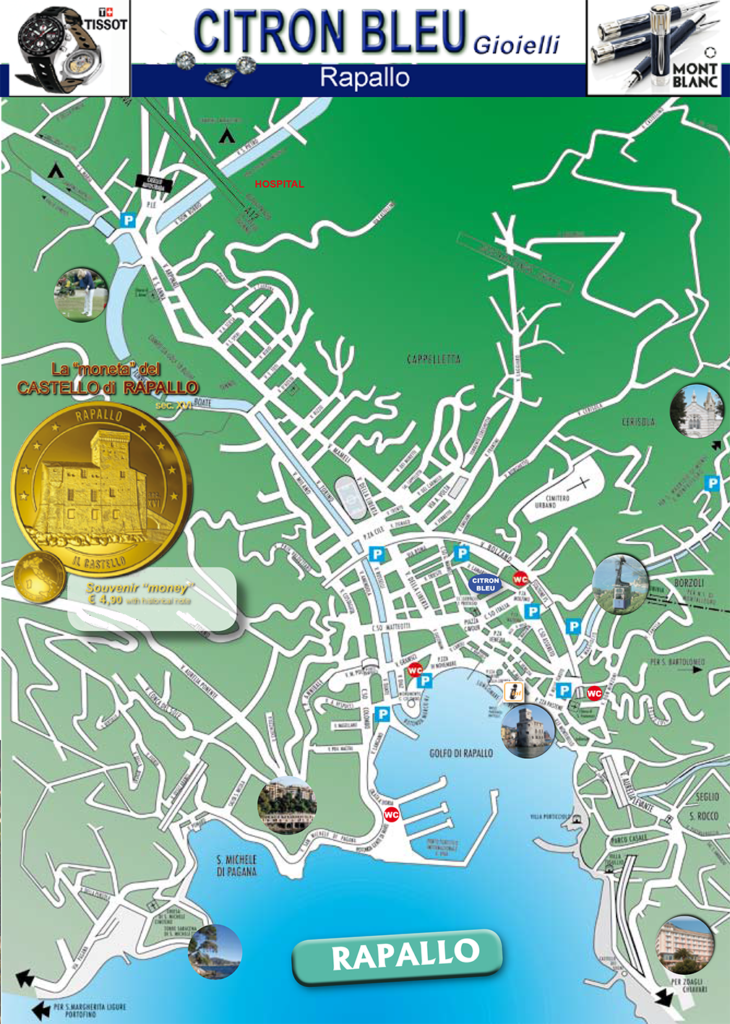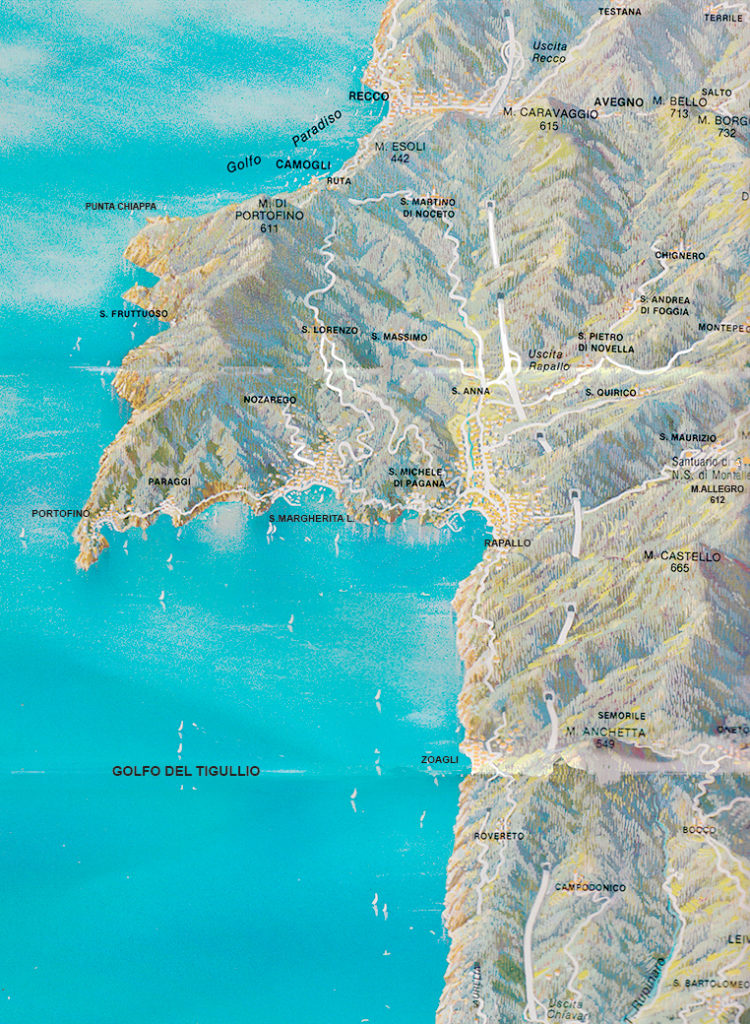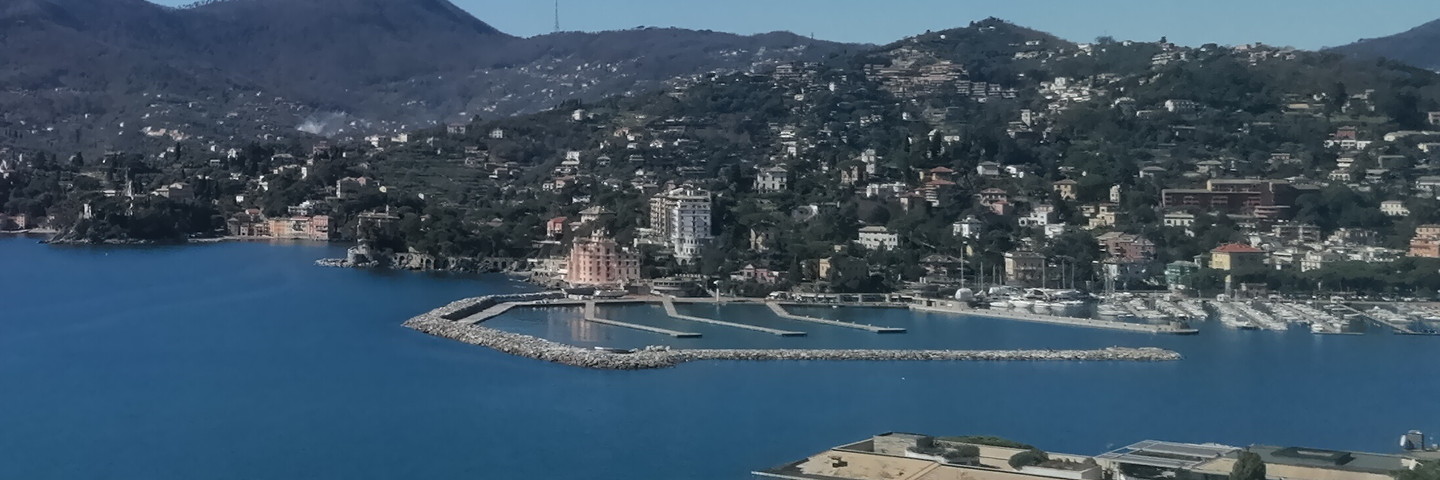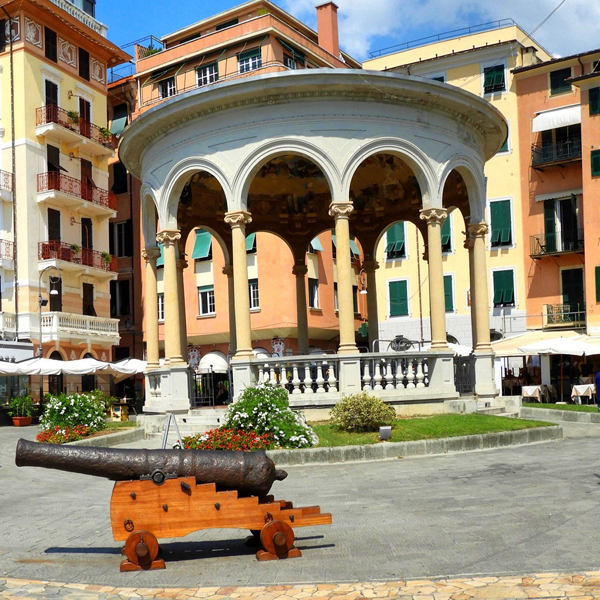2nd Itinerary:
From the seafront to the historic center
up to San Michele di Pagana
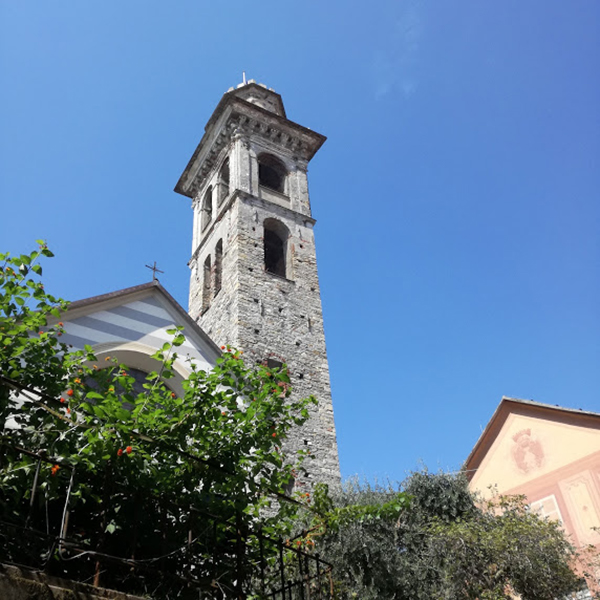
Let’s start from the Music Kiosk (1929).
On the side there was the building that housed the Podesteria and the Capitaneato.
It was the so-called “Court”, built before the thirteenth century. the political / jurisdictional activity of the Podesteria and from 1608 of the Capitaneato of Rapallo carried out the first.
The building was demolished in 1937.
The itinerary continues through via Mazzini and going up via Magenta where at number 26 a door is surmounted by a large slate lintel reproducing in a mystical stylized form, the scene of the “Annunciation” with the Angel Gabriel.
Continue to the Church of Santo Stefano which is believed to be the first church in the village built before the year 1000.
The Civic Tower was erected on the side of the Church to seal the agreement between the fractions then in struggle.
t is the oldest civil monument in the city.
Continuing on, we visit the 16th century Oratorio dei Bianchi which has a single nave and a small bell tower.
It is home to the Confraternity of the Whites and inside there are the Ligurian Process Crucifixes, an 18th century organ enclosed in a baroque wooden structure, a wooden statue of Maragliano depicting San Sebastiano, a Madonna with child and Saints with uncertain attribution (Domenico Piola or Domenico Fiasella).
On the side of the Oratory is the current Palazzo del Comune, the former Hospital of S. Antonio, (15th century).
It is an ancient, solid and imposing palace, among the most significant in the city.
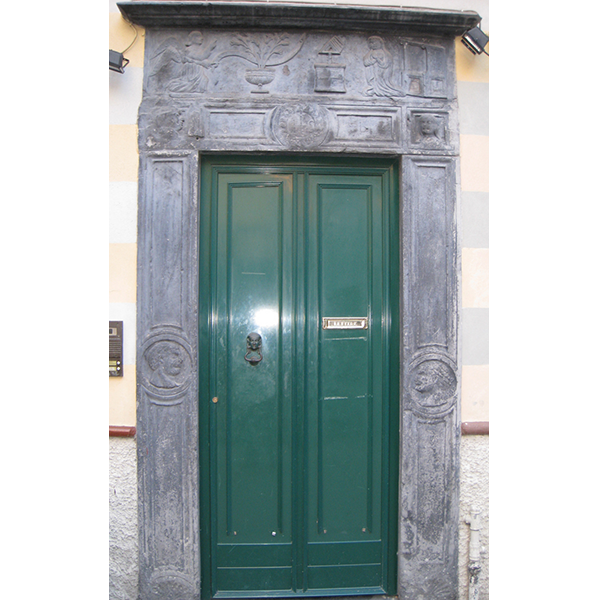

end The Civic Tower
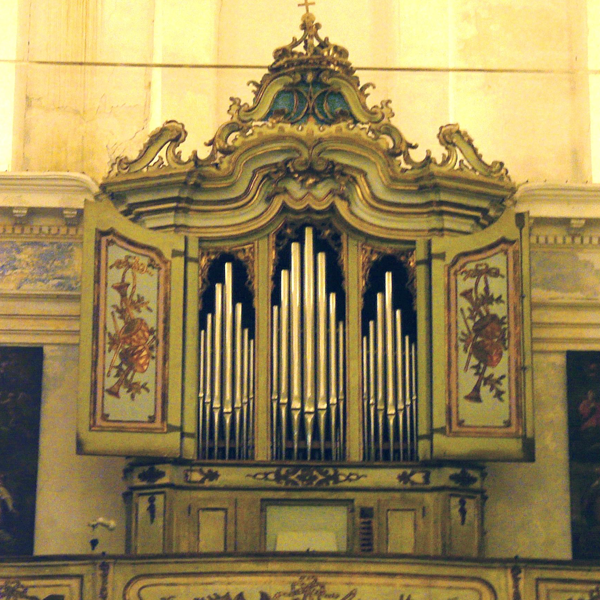
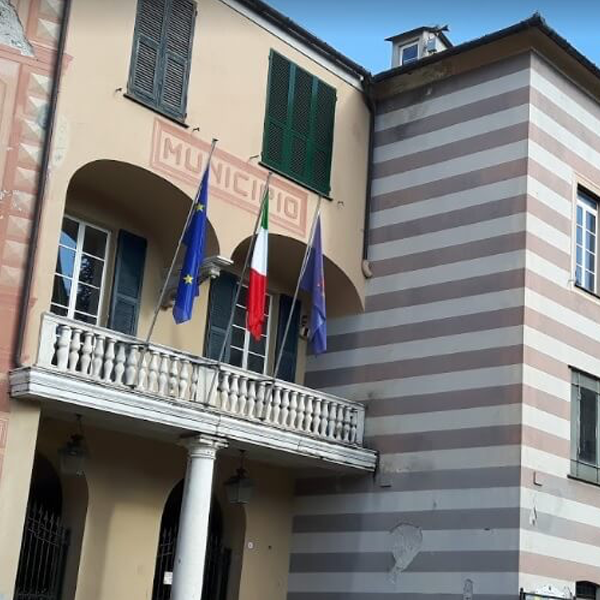
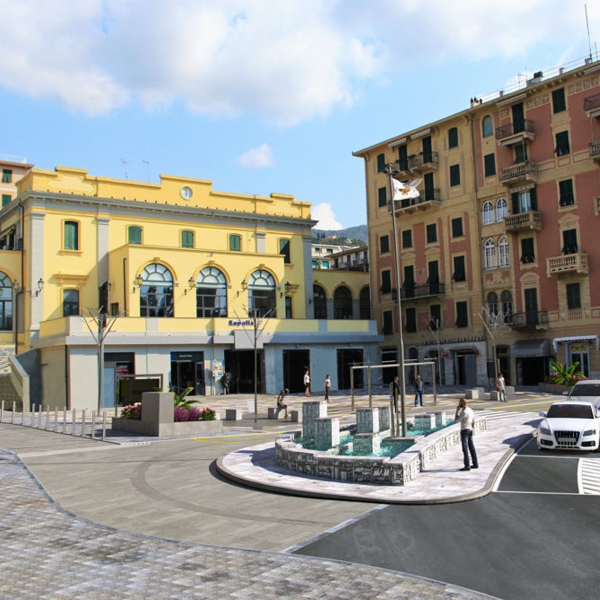
We continue through the adjacent Piazza delle Nazioni, on the bottom an Ancient Portal is the entrance of the Augustinian Convent (ex Hospital) which was the merit of the brother Gio Battista del Poggio in 1470. The complex over time was composed not only by the convent but also by a three-nave church with a wooden bell tower. After various historical events (see French Revolution) and the definitive removal of the friars of San Agostino from the Convent in 1810, it was transformed into a hospital until a few years ago. Continue on Corso Italia.
In Piazza Canessa, the entrance to the Basilica of Saints Gervasio and Protasio consecrated by Pope Gelasimo II in 1118 is located. The origins of the church date back to the end of the fourth century and the transformations until the beginning of the seventeenth century were different. presenting a romantic and gothic imprint. The marble facade in neoclassical style is adorned with a bronze door by Arrigo Minerbi and Piero Bolis (1957).
The bell tower was started in 1753 and embellished in the following centuries. The interior of the church is divided into three naves and among the numerous works there is a wooden crucifix from the 18th century in the 2nd right chapel, the miracle of San Biagio by Domenico Fiasella in the last right chapel, and the 6th chapel on the left. XVI century and in the 3rd the Deposition attributed to Luca Cambiaso.
Our walk continues towards Piazza Cavour and via Cairoli, up to the ancient Porta delle Saline (1629), the only one left of the five that interrupted the walls made up partly of the buildings leaning against each other.
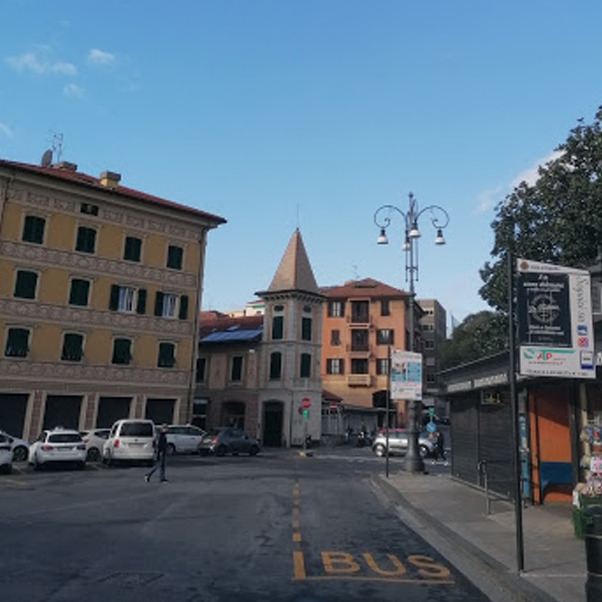
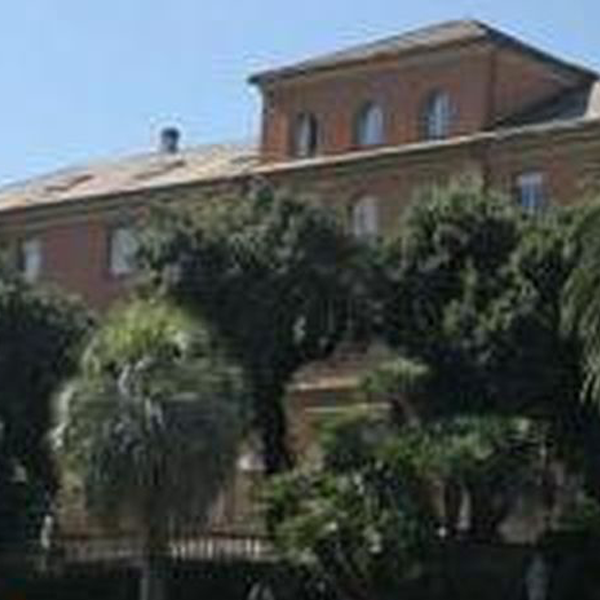
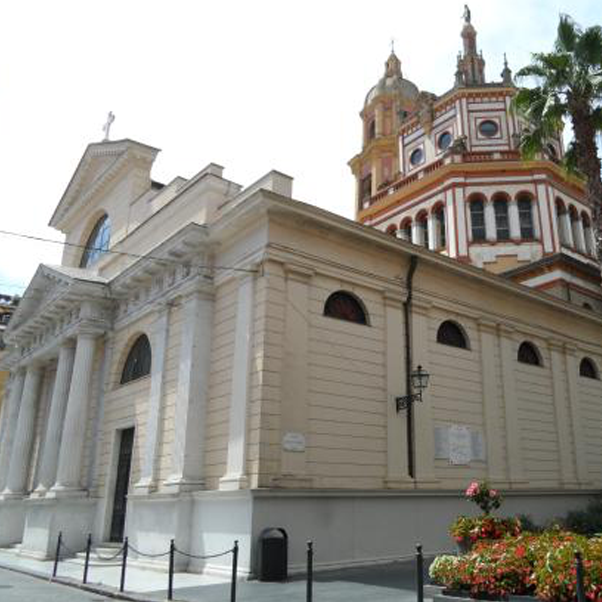
Santi Gervasio e Protasio
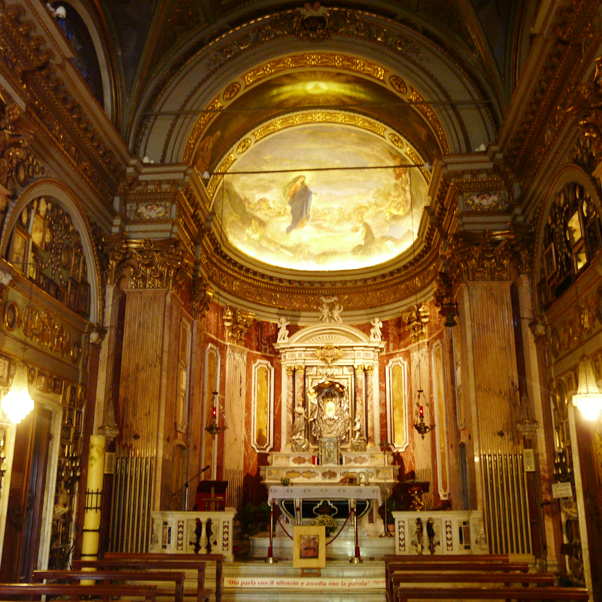
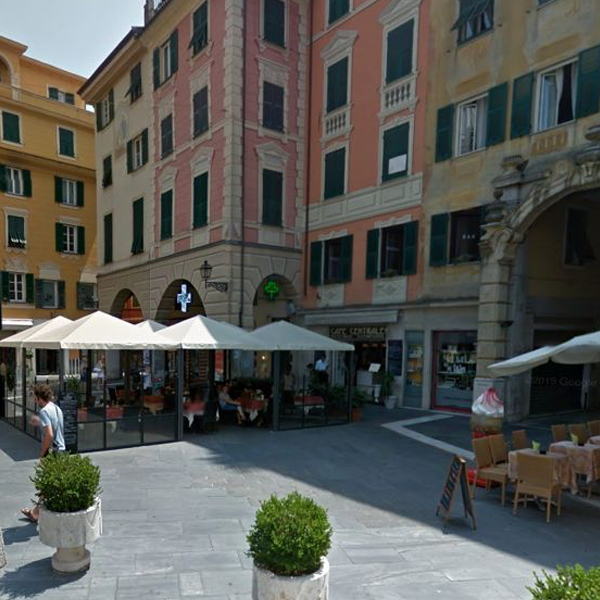
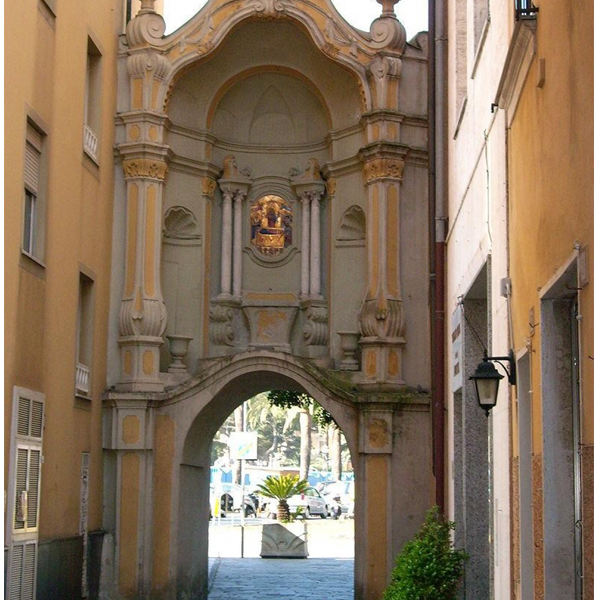
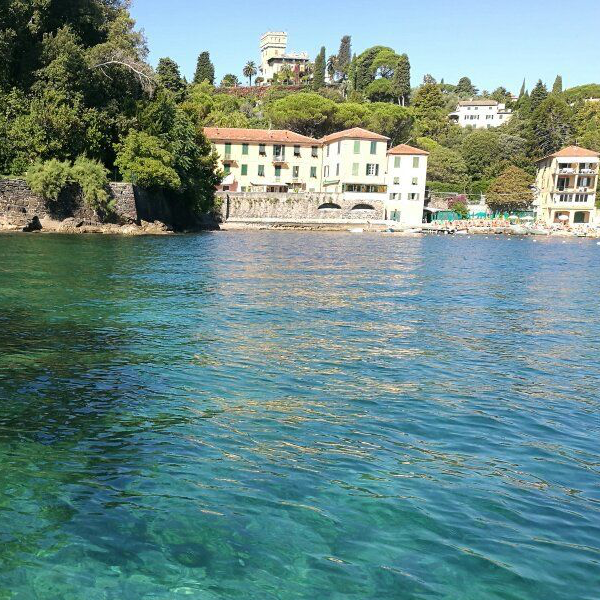
Then we continue towards the gardens where various historical monuments are located, including that of the “Fallen of all wars” (1962) by the sculptor Sandro Cherchi. Crossing the small bridge over the canal you arrive at the Public Port, and continuing on you come to the entrance of the Porto Carlo RIVA.
If we want and time we can continue the walk along the busy coastal road that leads to Portofino, and after 15 minutes we find ourselves in front of the small bay of San Michele di Pagana, the only Rapallo hamlet overlooking the sea.
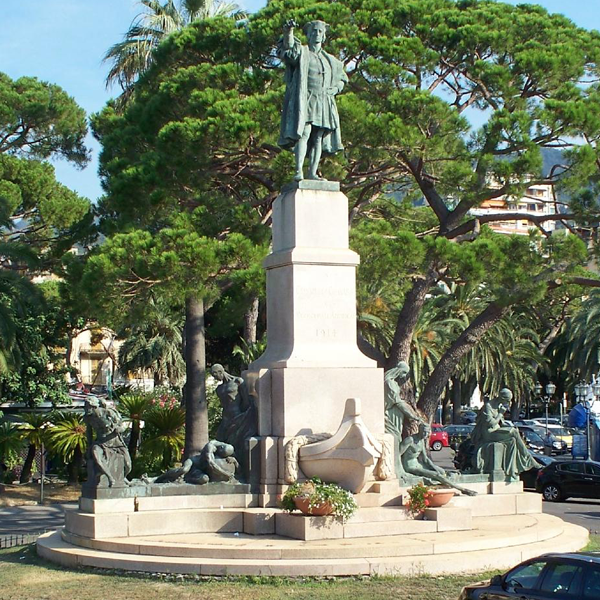
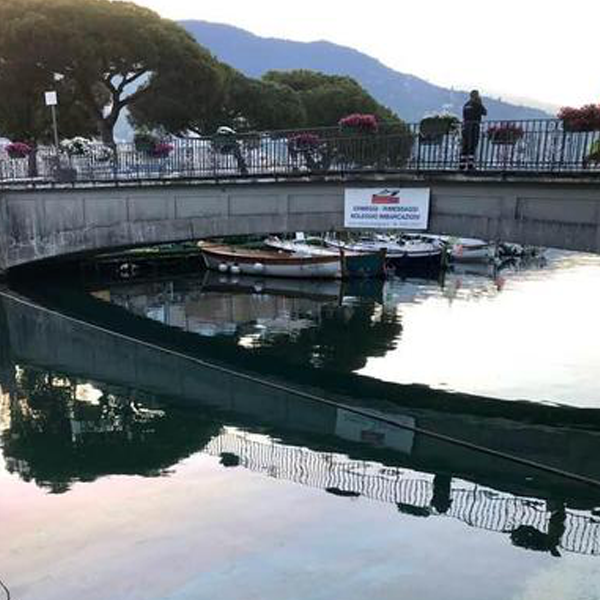
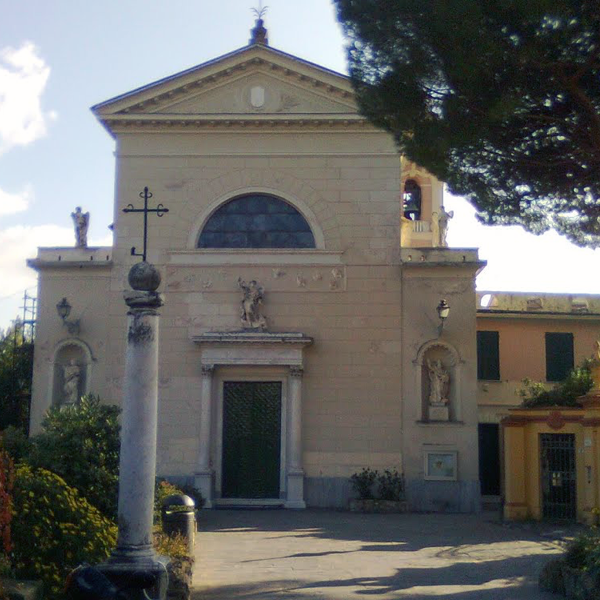
San Michele di Pagana
The sea coast is mainly divided into three bays:
Pomaro, Trelo or Travello and Prelo, each enclosed in the classic and typical Ligurian village with a few tall, narrow houses by the sea, connected to each other by a characteristic narrow cliff that, skirting the sea, crosses the three seafaring nuclei.
Other pedestrian or driveways allow reaching the local Parish Church of San Michele which dates back to 1133 probably built on the remains of a pre-existing pagan building.
The Church has a single nave and preserves the canvas of the Crucifixion by the painter Van Dyck painted during his stay in San Michele di Pagana between 1621 and 1624.
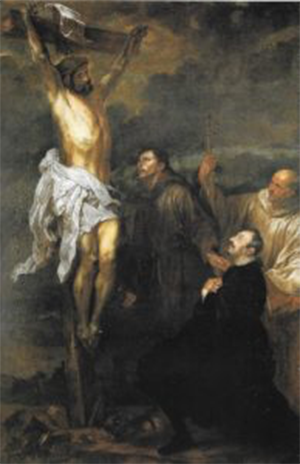
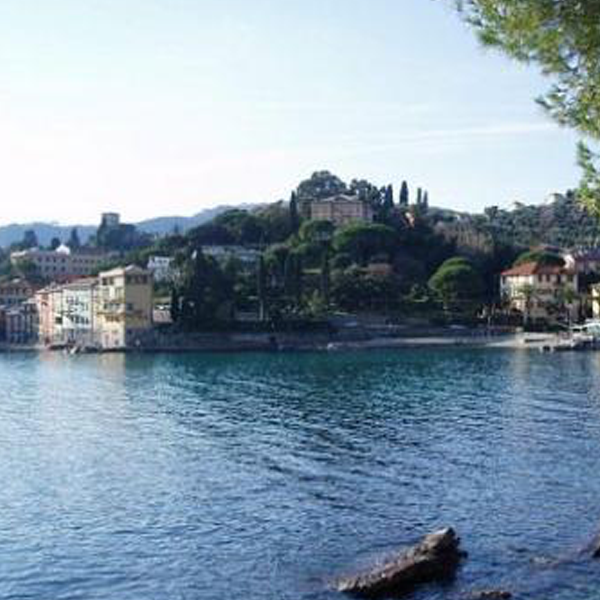
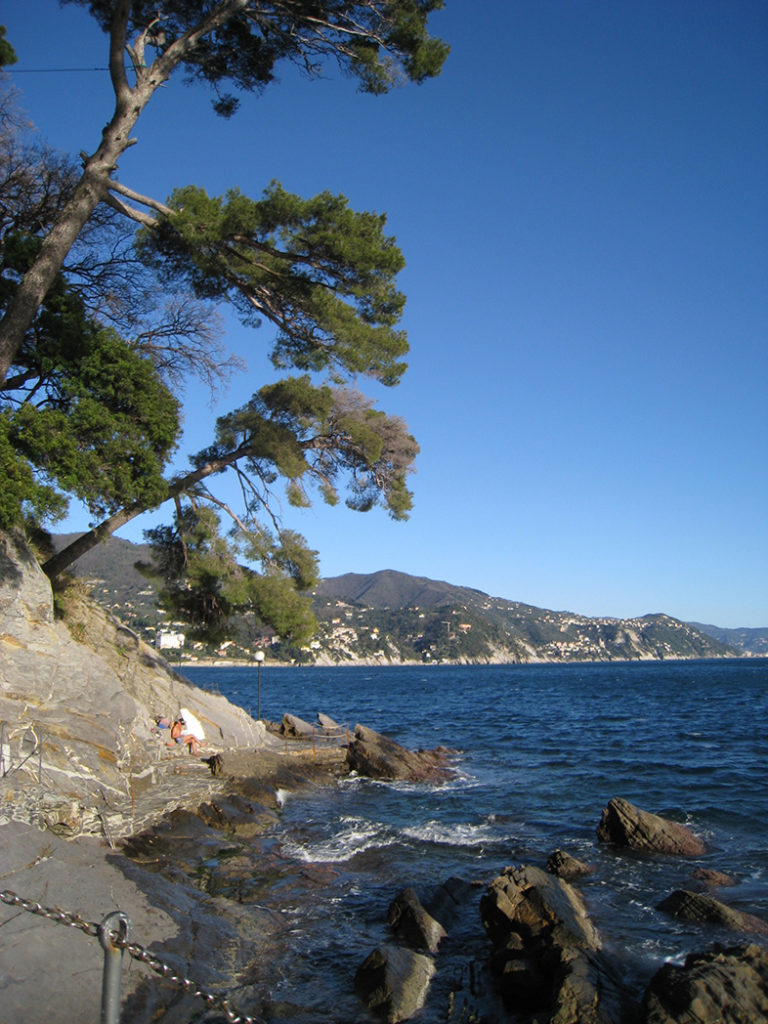
In the church of San Michele di Pagana there is an ex voto signed by Anton Van Dyck. It is the altarpiece commissioned to the painter by Francesco Orero, aromatarius, that is, pharmacist but also perfumer, in order to obtain protection and increase his activity in the pharmacy field of his time. In fact, the dying Crucifix stands out in the picture, with the gaze now almost turned off, however, towards the figure of the devout kneeling and flanked by two saints: San Francesco, his namesake the first, San Bernardo, among the protectors of the Republic of Genoa, the second. The picture testifies illustrious critics, it was painted by Van Dick in the final phase of his stay in Genoa in a stop in Rapallo on his return from Sicily in 1624, just before leaving for Antwerp, with the same artistic and ingenious commitment with which he had made the Madonna del Rosario for the oratory of San Domenico in Palermo.
